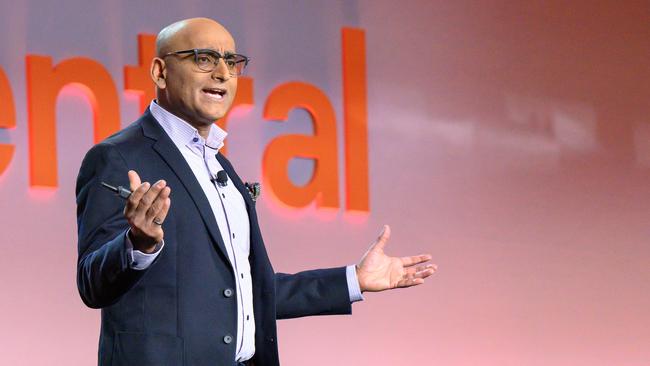Haves and have-nots as companies grapple with new workplaces
As employers grapple with the hybrid model, some workers unable to work remotely resent those who can stay home.

In a world of hybrid workplaces, employers face challenges in managing the tensions between remote workers and those forced to turn up to the office every day, says a leading software company executive.
Amir Hameed, a vice-president at RingCentral, which provides cloud-based products, says there are now “haves and have-nots” in many workplaces, with some people unable to work from home and others making use of the trend towards the hybrid model – a mixture of remote and in-house work.
In an interview during a recent visit to Australia, Mr Hameed said that as well as managing employees’ different demands, they also had to deal with the flip side for those who do not go into the office and feared they might not be “seen” for promotion and other opportunities.
He said CEOs around the world were “still trying to figure out the optimum formula” for their workplaces, to ensure productivity and also to retain employees.
“You don’t want to put them in a position where they’re saying, hey, I don’t want to work here anymore, because you’re forcing me to come into the office, and I haven’t bought into it,” he says. “In Covid the ability to work from home was critical to drive productivity and enable the lights to stay on. I think the world realised that you can work effectively from home when you need to. But now it’s like, well, wait a second – we’ve made you productive working from home when you needed to, but now you don’t necessarily need to and we’ve got all this real estate, we’ve got all of these reasons why you might want to come back in and collaborate.”
Mr Hameed said some US companies had been forced to retreat from strict mandates to return to the office for five days.
“That didn’t work out so well so what we’re seeing now is more of a balance. If you are going to ask people to come into the office, there should be some reason for it. Is there a specific meeting – not just a team meeting, because you can effectively do that over video – but perhaps there’s a workshop, perhaps there’s some training and development.”
During Covid, all RingCentral staff worked from home, he said, but “then we said, we’ve got these offices at our headquarters in Silicon Valley, and there’s a great cafeteria and all these other perks. So we said, well, we’ve got the building, but we want people to come in, you know, three days a week, and then we realised some people don’t like that. So now we’ve adopted a policy of 30 days a quarter (in the office).
“Hybrid is here to stay for sure. We’re still evolving, we’re still learning, but some flavour of hybrid is here to stay.”
Ipsos research carried out for RingCentral earlier this year identified that 50 per cent of the 1000 people interviewed across Australia, UK, US, France and Germany believed quiet spaces and flexible work management helped their productivity.
At the same time, workers cited office chatter and emails as top distractions form their jobs: almost 40 per cent of people aged 35-44 were most likely to find office chatter a distraction and 55 per cent of that cohort said they preferred hybrid work.
One third of workers aged 21-34 said scrolling social media was a distraction.
Quality Wi-Fi “was far and away considered the most important tool for productivity”, the report found, with younger workers more likely to value music apps, mental health apps and noise cancelling headphones as useful tools.








To join the conversation, please log in. Don't have an account? Register
Join the conversation, you are commenting as Logout